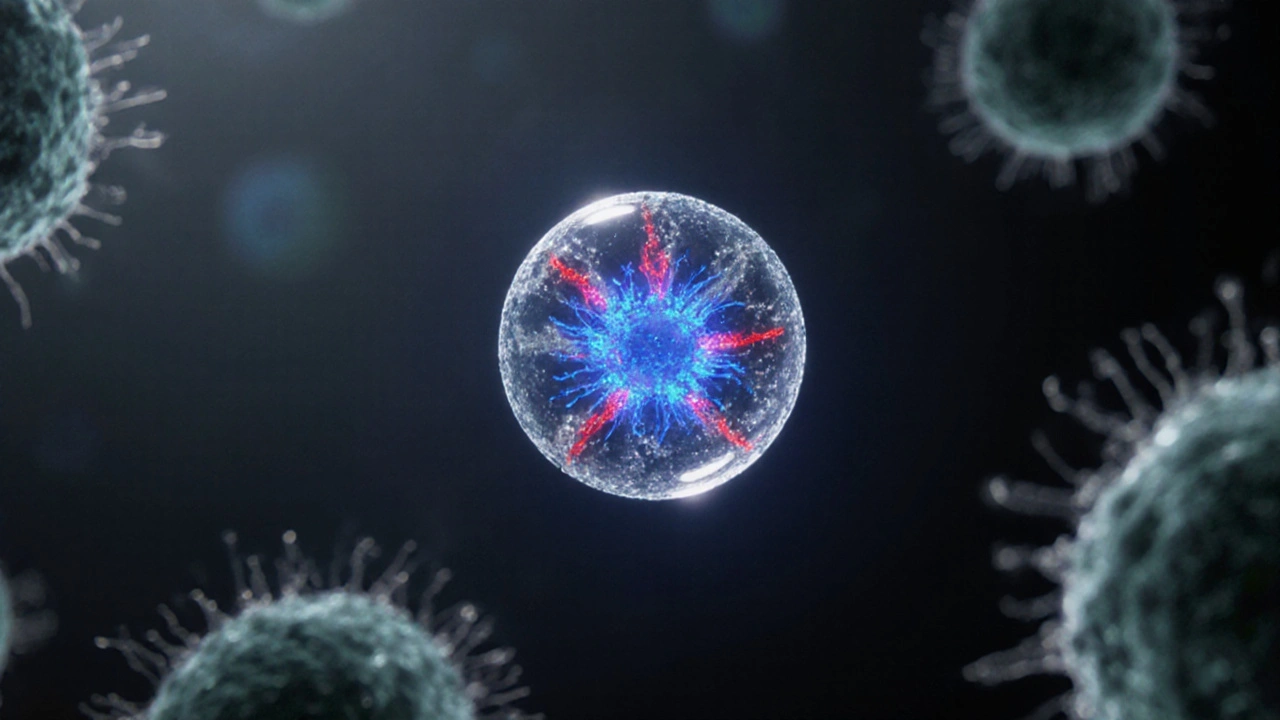When talking about Angiogenesis, the formation of new blood vessels from pre‑existing ones. Also known as new blood vessel formation, it plays a crucial role in wound repair, cancer spread, and eye disorders. In plain terms, angiogenesis is the body’s way of delivering oxygen and nutrients where they’re needed. It’s a tightly controlled process that can tip toward disease when the balance breaks. For example, excessive growth fuels tumor expansion, while insufficient growth stalls healing. This dual nature makes angiogenesis a hot target for both drug developers and clinicians.
One of the biggest drivers of new vessel growth is Vascular Endothelial Growth Factor (VEGF), a protein that signals endothelial cells to sprout and migrate. VEGF levels skyrocket after injury, signaling the body to start building fresh capillaries. Researchers have measured VEGF spikes of up to 15‑fold in wound sites, and tumors can hijack the same signal to secure a blood supply. Understanding VEGF’s role lets doctors predict when angiogenesis will help and when it will hurt, guiding treatment choices across specialties.
When the growth goes rogue, doctors turn to anti‑angiogenic therapy, medications that block VEGF or related pathways. These drugs, like bevacizumab, literally starve tumors by cutting off their blood flow. Clinical trials show a median 4‑month survival boost in certain cancers when anti‑angiogenic agents are added to standard care. Outside oncology, the same approach helps eye doctors manage age‑related macular degeneration, where uncontrolled vessel growth damages vision. The therapy’s success hinges on precise timing and dosage, because shutting down too much growth can impair normal healing.
At the heart of any vessel‑building event are endothelial cells, the thin lining cells that line blood vessels and respond to growth cues. These cells proliferate, form tubes, and connect to create a functional network. Studies report that a single endothelial cell can generate up to 30 µm of new tube length per day under optimal VEGF stimulation. In disease, these cells can become abnormal, forming leaky, disorganized vessels that aid tumor metastasis. Targeting the behavior of endothelial cells—either by encouraging proper alignment or by forcing apoptosis—offers another layer of therapeutic control.
All these pieces—VEGF signaling, anti‑angiogenic drugs, and endothelial cell dynamics—interlock to shape how our bodies grow, repair, and sometimes betray us. Below, you’ll find a curated list of articles that dive deeper into each of these aspects, from the science behind VEGF spikes to real‑world comparisons of anti‑angiogenic treatments. Whether you’re a patient, a healthcare professional, or just curious about how new blood vessels affect health, the collection offers practical insights you can use right away.

Explore how genetic mutations, angiogenesis, immune evasion, and metastasis drive tumor growth, and see how modern therapies target each step.
View more